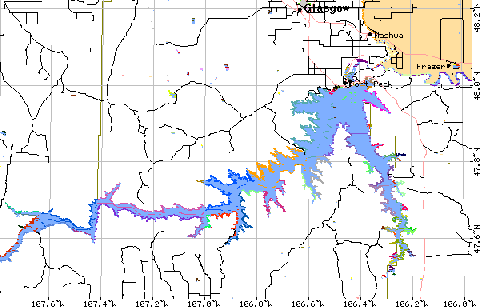

The construction of Fort Peck Dam began during October of 1933 as part of Franklin D. Roosevelt's New Deal program. This public works project employed over 10,000 people during the peak of construction in 1936. Laborers were earning 50 cents per hour and skilled workers $1.20 per hour. The US Army Corps of Engineers built For Peck Dam for flood control, irrigation, navigation and domestic water supply. Hydroelectric power generation and recreation were authorized as uses of Fort Peck Lake after the dam was completed. Fort Peck Dam was constructed by hydraulic methods and is still the largest hydraulic earth filled dam in the world. Missouri river bottom sands, silts and clays were dredged by electrically operated dredge boats which were constructed at the Fort Peck boat yard during 1934. The dredge material was then pumped through 28 inch pipeline to the dam site. The majority of the dredge material was taken from the Missouri river which is covered by Fort Peck Lake today. During the construction years, 1933-1940, the population in the Fort Peck area was over 50,000. Eighteen construction boom towns sprang up within a few miles of the dam site. The November 1936 issue of Life Magazine featured Fort Peck Dam and one of these boom towns. The Missouri River was diverted through the four flood control tunnels on June 24th, 1937, but Fort Peck Dam was not completed until 1940. A lake 130 miles long and 16 miles wide at its widest and 220 feet deep at the deepest spot was formed by the dam.
 Get your own Free Home Page
Get your own Free Home Page